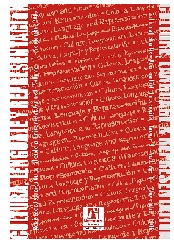Cosmopolitan (Dis)encounters: The Local and the Global in Anthony Minghella’s Breaking and Entering and Rachid Bouchareb’s London River
Contenido principal del artículo
Resumen
Through the postcolonial reading of Breaking and Entering (Anthony Minghella, 2006) and London River (Rachid Bouchareb, 2009), I mean to analyse the multiethnic urban geography of London as the site where the legacies of Empire are confronted on its home ground. In the tradition of filmmakers like Stephen Frears, Ken Loach, Michael Winterbottom or Mike Leigh, who have faithfully documented the city’s transformation from an imperial capital to a global cosmopolis, Minghella and Bouchareb demonstrate how the dream of a white, pure, uncontaminated city is presently «out of focus», while simultaneously confirming that colonialism persists under different forms. In both films the city’s imperial icons are visually deconstructed and resignified by those on whom the metropolitan meanings were traditionally imposed and now reclaim their legitimate space in thenew hybrid and polyglot London. Nevertheless, despite the overwhelming presence of the multicultural rhetoric in contemporary visual culture, their focus is not on the carnival of transcultural consumption where questions of class, power and authority conveniently seem to disappear, but on the troubled lives of its agents, who experience the materially local urban reality as inevitably conditioned by the global forces –international war on terror, media coverage, black market, immigration mafias, corporate business– that transcend the local. This paradox is also perceived in the way the two filmmakers depict the postcolonial metropolis as the locus of social inequality and disequilibrium, but also as the scenario of unexpected encounters and alliances where both the protagonists and the spectators can explore the fantasies and fears about Otherness, and thus contest racial stereotypes.
Descargas
Detalles del artículo
Se utiliza una licencia de derechos de autor CREATIVE COMMONS de acceso abierto.
Aquellos autores/as cuyos trabajos sean publicados por esta revista esta revista, aceptan los términos siguientes:
Concretamente mediante las siguientes acciones:
- - Los autores/as conservarán sus derechos de autor y garantizarán a la revista el derecho de primera publicación de su obra, el cuál estará simultáneamente sujeto a la Licencia de reconocimiento de Creative Commons CC BY SA que permite a terceros compartir la obra siempre que se indique su autor y su primera publicación esta revista.
- - Cumplimiento de un porcentaje mínimo del 40% de mujeres como revisoras de los trabajos enviados a la revista.
- - Los autores/as conservarán sus derechos de autor y garantizarán a la revista el derecho de primera publicación de su obra, el cuál estará simultáneamente sujeto a la Licencia de reconocimiento de Creative Commons CC BY SA que permite a terceros compartir la obra siempre que se indique su autor y su primera publicación esta revista.
- - Los autores/as podrán adoptar otros acuerdos de licencia no exclusiva de distribución de la versión de la obra publicada (p. ej.: depositarla en un archivo telemático institucional o publicarla en un volumen monográfico) siempre que se indique la publicación inicial en esta revista.
- - Se permite y recomienda a los autores/as difundir su obra a través de Internet (p. ej.: en archivos telemáticos institucionales o en su página web) antes y durante el proceso de envío, lo cual puede producir intercambios interesantes y aumentar las citas de la obra publicada.


